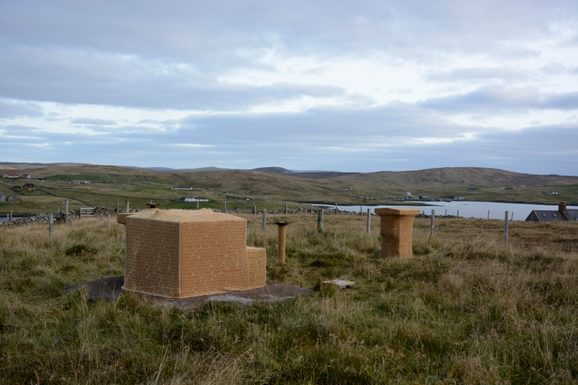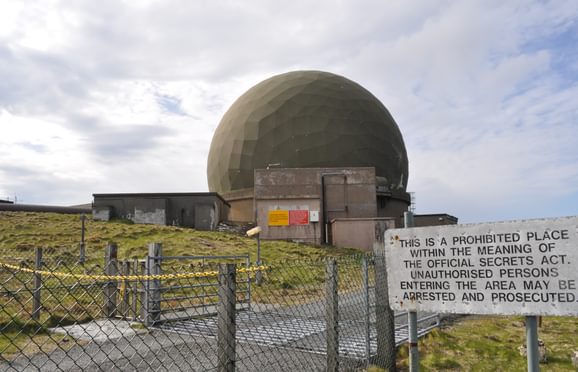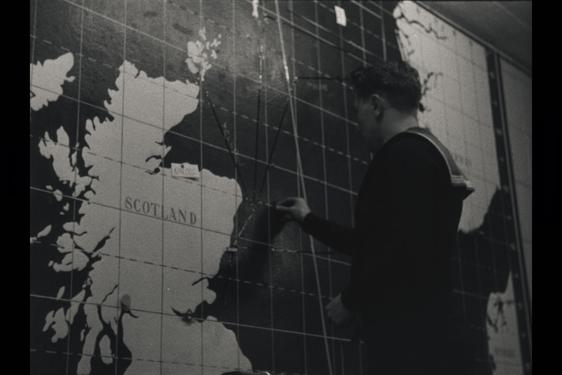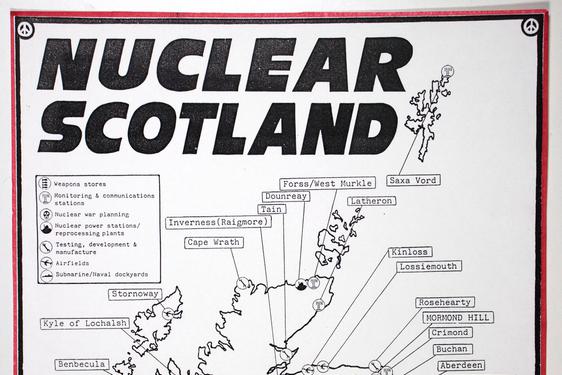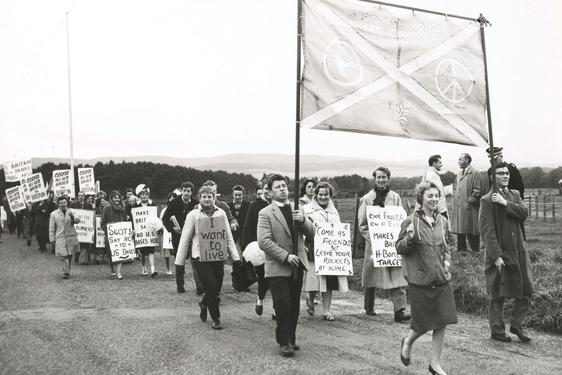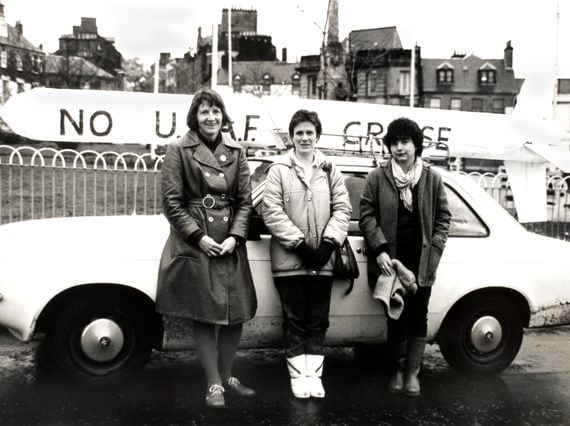
Women of Cold War Scotland
News Story
Scotland played a unique role during the Cold War, a 40-year nuclear stand-off between the USA and the Soviet Union. Despite looming conflict, people in Scotland mobilised in a variety of ways in reaction to this changing world. Thousands of women activated in response, becoming key members of previously male-dominated organisations such as the armed forces and civil defence.
Others were motivated to protest new and dangerous installations arriving in Scotland that directly impacted their lives and strengthened their personal beliefs. The Cold War Scotland exhibition at the National Museum of Scotland tells their stories. Here, we explore the stories of six fascinating women and their Cold War connections.
Isabel Jackson: Women’s Royal Army Corps Veteran
The Women’s Royal Army Corps (WRAC), established in 1949, was the women’s branch of the British Army. WRAC offered new opportunities for women. Many experienced active service during the Cold War, including occupied West Germany.
Isabel Jackson from Kilwinning, Ayrshire, joined the WRAC in 1975 after seeing an advert in a teenage girls’ magazine. Following six weeks of basic training in Guildford, Isabel became a switchboard operator. She was posted to the 16th (British Army of the Rhine) Signal Regiment Headquarters in Bielefeld, Germany. In this role she handled important calls for the Ministry of Defence. She also assisted with communications during large scale exercises.
During her time in the WRAC, Isabel enjoyed travelling and the busy social life of the army camp:
‘The Saturday night discos were very popular … you could get a pass to go skiing in Switzerland, but it was in your own time, and you had to get authority to do that. Normally we would go and do something different every day that you were off … there was always plenty to social life’
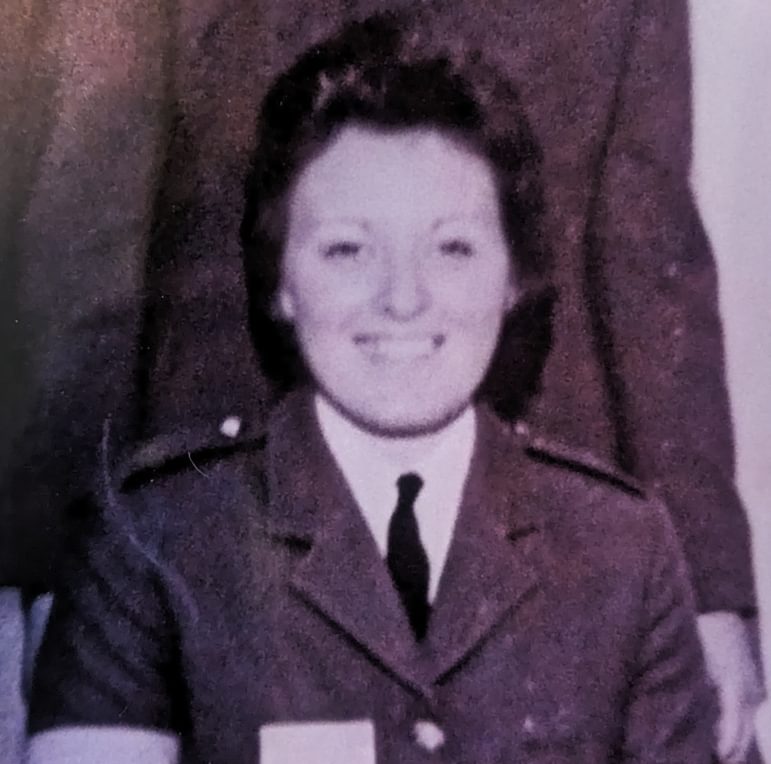
Kim Foden: Royal Observer Corps Volunteer
The Royal Observer Corps (ROC) was a voluntary civil defence organisation. In the event of a nuclear attack on Britain, their task was to monitor and communicate the location and power of the bomb. Observers carried out their role in underground monitoring posts spread across the country. Space in a monitoring post was tight, just big enough for three people. In the event of an attack, volunteers might have had to stay underground for a week, possibly longer. During this time they would monitor and report on conditions above ground.
Women were permitted to join the ROC from July 1941, during the Second World War. Historically, women maintained a strong presence in the ROC. From the outset, they had the same rights, status, and promotion opportunities as men.
Kim Foden was the Chief Observer of 60 Post at Kirkwall, Orkney, which was at the top of a cold and windy hill. She recalled enjoying the camaraderie with fellow Observers and the various training exercises, as well as her dislike for the uniforms:
I was never one for a uniform and saluting and all that kind of thing. The uniform that we were given was old RAF battle dress, and they issued me with a skirt. Well, who's going to go down a 15ft ladder and, a two foot by two-foot vertical hatch and down there in a skirt? Definitely not me!

Margaret Hubbard: Local memories of Americans in Dunoon
The Cowal Peninsula on the west coast of Scotland was a perfect location for the US Navy to base their Polaris nuclear submarines, with access to the deep waters of the Clyde, local airports, shipping industry connections and crucially, within target range to the Soviet Union
Local people were concerned this new American naval base made Dunoon a target for the Soviets. Anti-nuclear campaigners and local people formed protest marches and attempted to block access to the base in opposition.
Margaret Hubbard grew up in Inellan near Dunoon. She was conflicted by the situation as her father had been a submariner during the Second World War, but she was also concerned about the dangers American submarines would pose. As a teenager in 1961, Margaret recalled her initial interactions with American school children:
They came when I was in first year of secondary school and I can remember the day they came. The weather was bad. We saw … the ship coming up the river, and then … lo and behold, some of them were in school with us. We learned to play baseball, they learned Scottish country dancing and there was a general, well, it's just kids are kids. We just got interested in each other.

Eileen Crowford: Tourist behind the Iron Curtain
Specialist tour companies offered package holidays behind the Iron Curtain. This attracted tourists interested in learning about Soviet arts, culture, and lifestyle. In Scotland, this tourist trade expanded significantly after 1961 when the Scotland-USSR Society established Sovscot Tours Ltd. Records suggest Sovscot Tours had up to 3,000 registered holidaymakers. An equal number of visitors booked reciprocal holidays from the USSR to Scotland.
One enthusiastic traveller was Eileen Crowford, from Edinburgh. She embarked on a series of holidays to major cities including Moscow and Leningrad. She also travelled all over the Eastern Bloc, from the German Democratic Republic to Romania and Yugoslavia. While on holiday, Crowford took up the carefully curated excursion opportunities offered. These were intended to offer visitors an exciting and positive view of Communist societies.
Eileen kept diaries, itineraries, and notes about the things she bought, such as ornaments, badges, and jewellery. Eileen bequeathed her vast collection to National Museums Scotland in 1990. It offers a fascinating insight into Cold War tourism.

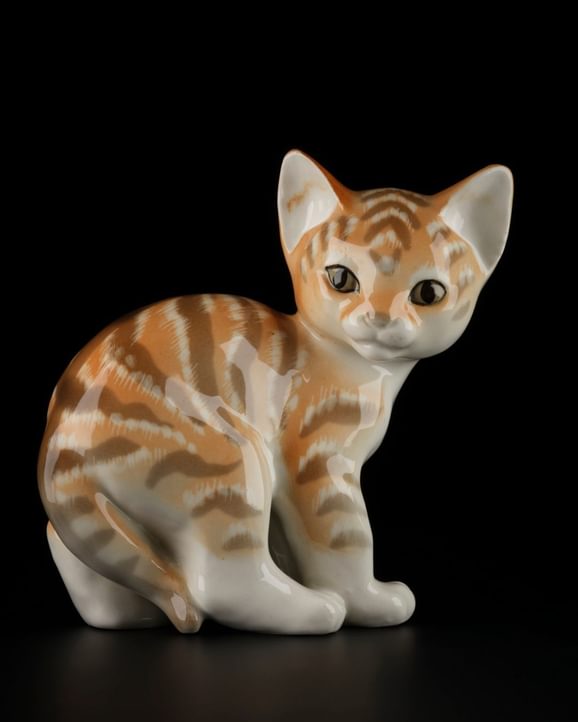
Kristin Barrett: Peace and Anti-Nuclear Campaigner
The anti-nuclear movement in Scotland mobilised citizens in response to the British Government’s development and testing of nuclear weapons, deadlier than those used in Japan. In 1958, the Campaign for Nuclear Disarmament (CND) formed. The CND encouraged non-violent direct action by organising marches and sit-downs at military bases.
For over 60 years, Kristin Barrett has supported the CND and demonstrated for peace. Inspired by her older sister, she began campaigning while studying at the University of Aberdeen aged 17 in 1960. Kirstin participated in marches on RAF Edzell and at Aldermaston. She also helped establish the University of Edinburgh’s student CND group. Throughout the 1980s and 1990s, Kristin was very active around Perthshire. She also participated in larger campaigns and marches, such as the Peace March Scotland in 1982, and visited peace camps at Greenham Common and Faslane.
Kristin recalled a story of protesting against American Cruise missiles:
I think we were pretty clear that we didn’t want American Cruise missiles. In fact, one time in Blairgowrie we made a cruise missile out of the tubes from inside of a carpet. We had to get some method of taking it to Edinburgh. And I just asked a painter who lived around the corner, ‘Do you know who would lend us a van? He said, ‘you can have my van.’ So, we had the missile on the top of the vehicle and went off to Edinburgh and left it at the gate of the American Embassy. I think they didn’t know what to do with it, it didn’t really fit in their dustbin.
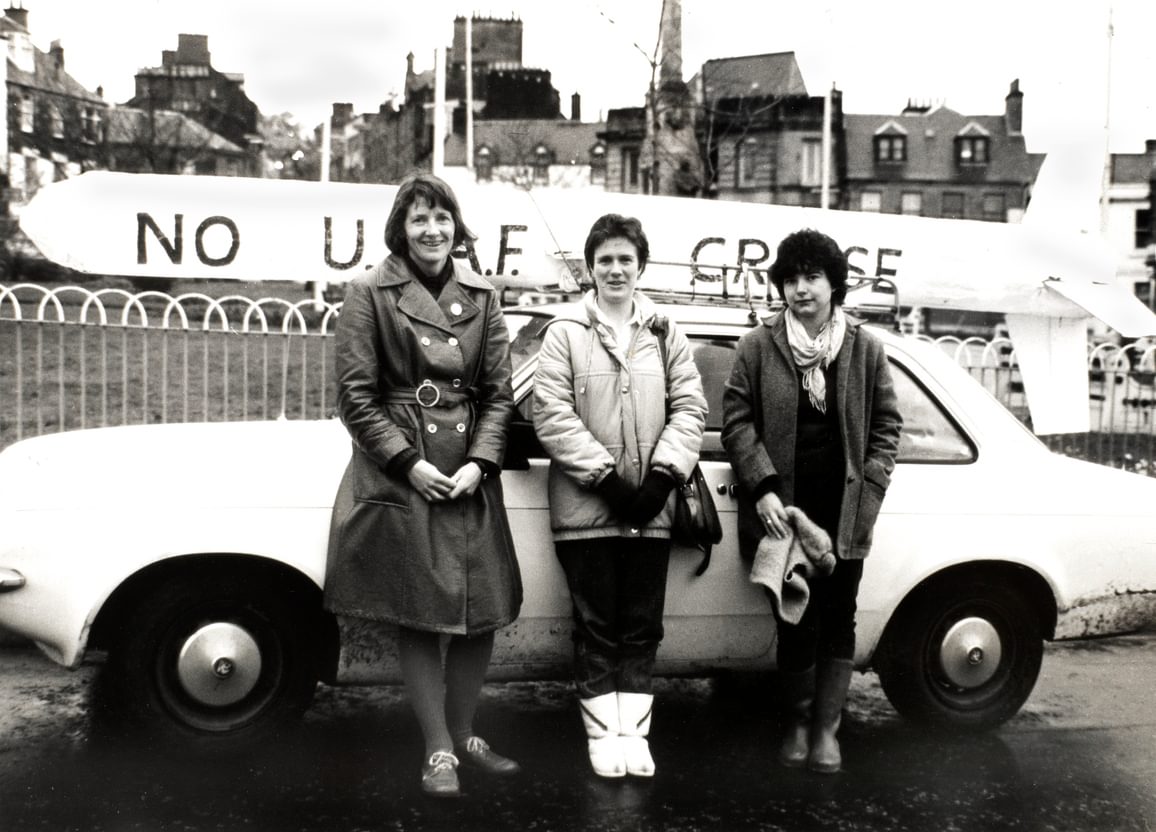
Roxane Permar and Susan Timmins: Legacy of Cold War Scotland
Although, the Cold War in Britain remained ‘cold', the abundant remains of Cold War objects and buildings across the country are material evidence of the conflict. They are also physical reminders of Britain’s prominent Cold War military presence.
Shetland-based artists Roxane Permar and Susan Timmins create collaborative work based on perceptions of the Cold War, on both sides of the Iron Curtain. Their work explores Cold War sites, using sculpture, sound, film, and photography to interpret these spaces. It combines the physical legacy of the Cold War with people’s memories from across political and cultural borders in Scotland, and its Northern and Arctic neighbours.
Abandoned ROC posts, radar and listening stations appear as enigmatic structures in the landscape. These images were taken between 2012 and 2022 at locations including Unst, Garthsness and Walls in Shetland, and Inverbervie in Scotland. They depict the radar station at RAF Saxa Vord and a Royal Observer Corps monitoring post in Shetland wrapped in a knitted cover.
